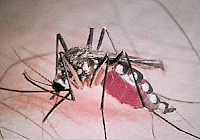I don’t like talking about the weather. I have plenty of meteorologist friends that can ably do that on my behalf. In fact, our book about climate change isn’t as much about the climate as it is about its impacts and what can and should be done to prepare and respond. (If you’re looking for a great discussion on the weather aspect of climate change, Heidi Cullen’s book is a very accessible, and thought-provoking, text on where we could be headed.)
But the weather is the easiest frame of reference when it
comes to climate change—it’s right there in front of us, relatable, and people
have a pretty good feel for what it means—and certainly what lessons can be
learned from our current environment. And when I see something in June that’s being
monitored as a possible tropical depression, I think about what kind of
mindset a functional manager needs to adopt in order to do their job.
 |
| “And they shall call her ‘Debby.’ Image taken the morning of June 22, 2012, by Accuweather |
See, hurricane season
in the Atlantic technically runs
from June 1 through November 30, so anything is possible during that timeframe when
it comes to tropical storms. But anyone who has ever booked a Caribbean cruise
knows that your cheapest rates are in August, primarily because that’s when
severe storms and hurricanes are most likely to rain on your (tropical) parade.
Traditionally, hurricane season isn’t in full swing until the late summer.
But
NOAA has already looked at things from a historical perspective, and what
they found was that Hurricane Season 2012 jumped the gun, noting that
The Atlantic season has already gotten off to a quick start...with tropical storms Alberto and Beryl forming during the month of May. This is the first time since 1908 that two tropical cyclones developed before 1 June.
Consider the other severe weather events 2012 has already
delivered to the United States. March was the setting for a rash of powerful
storm systems, something that research
meteorologist Harold Brooks of the National Severe Storms Laboratory noted
was a result of optimal tornado conditions arriving earlier than in previous
years.
 |
| March 2, 2012, tornado in Henryville, In., part of a system that killed 7 people. |
In the
book, we pose the question of risk on each of the seven functional
chapters. One thing we found over the course of this discussion is that
organizations must assess associated
risk that come with discrete events, along with vulnerabilities to their assets
and processes. These factors will vary from place to place, but risk assessment
process remains the same: understanding the event and its impact, looking at
potential damage to what you do, and then determine its overall likelihood.
This isn’t a novel way of looking at things, but rather a good method to apply
to the climate change issue, and the unique set of problems it could bring with
it.
Is this a cultural shift? I don’t know. I don’t think
it’s the same jarring consideration as how a flu pandemic might
force people to forgo shaking hands. But if we’re to really adapt to a
changing climate, that means shifting the way we think—or at least broadening
the things we’re considering in order to help safeguard our way of life.












